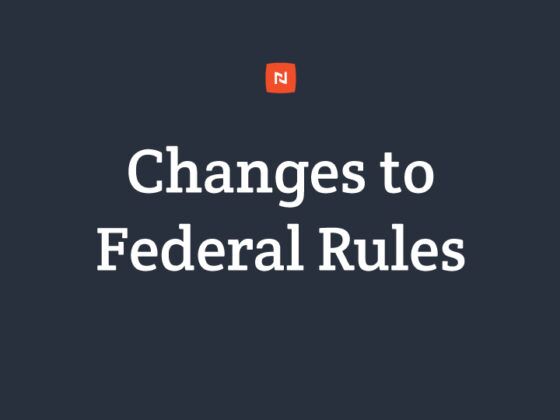Last week, Josh Gilliland from the Legal Geeks podcast and I discussed the proposed new federal rules for eDiscovery. The Federal Rules of Civil Procedure were last amended in 2006 to help lawyers manage electronic evidence in litigation, and a new set of amendments now seems inevitable. (We encourage you to take a look at the new rules, which are open for public comment.)
Josh provides a great overview of the proposed amendments, while I focus on the need for new rules and why these rules are a big deal. You can watch the whole thing below, or check it out on the Legal Geeks podcast.
Why rewrite the rules of Civil Procedure?
The short answer is that the exploding volumes of evidence in litigation have broken the discovery process.
Electronic evidence has been used in litigation for a long time. You could go back to the 1980’s and the Iran Contra affair, which relied heavily on Col. Oliver North’s email evidence, or the Microsoft anti-trust trial, which also turned on Bill Gates’ personal emails. But the moment when it became crystal clear that the legal profession needed new rules to manage electronic evidence in litigation was a case commonly known as Zubulake.
My first job in the legal industry was writing for the ABA Journal. Back in the early 2000’s I kept getting assignments to write about this case, Zubulake v. USB Warburg. It was pretty straightforward employment dispute.
However, the plaintiff in the case, Laura Zubulake requested emails that would establish her claim of being passed over for promotion. The company claimed that the requested emails were stored on backup tapes kept for disaster recovery purposes and the process of producing them would be too expensive.
If any other judge was handling the case, there might not be a story to tell. But the judge in this case was Shira Scheindlin. I’ve interviewed Ms. Scheindlin a few times. She is a tough minded individual. (She’s back in the news this week for issuing sanctions to a party that deleted emails related to a legal matter.)
She wrote six separate Zubulake decisions just explaining to how to handle the discovery of email backup tapes. Hundreds of dense pages of legal balancing tests, these decisions will give even the best lawyers in the world a headache.
A Nice Start
Many courts followed Scheindlin’s lead, but it was clear that the only way to have a uniform system for dealing with electronic evidence in litigation was to amend the Federal Rules of Civil Procedure.
What the 2006 updates to Federal Rules of Civil Procedure did was put in place a framework that makes discovery possible no matter what technical challenges are faced. Lawyers must now take advantage of the Rule 26(f) conference to hammer out the details of discovery with their opponents early on.
Second, they must advise their clients to identify any data sources that might be relevant to a matter and preserve it all.
In my opinion, the rules actually work very well. Sanctions are very, very rare and most lawyers now understand electronic evidence is discoverable. Instead of producing a long list of detailed rules, federal judges have a flexible and powerful framework in place – keeping discovery an efficient and cost-effective process.
If a party fails to preserve evidence or to identify data that will serve their client’s interests, it’s because they failed to use the process, not because they didn’t have clear rules.
But there is still a degree of abstruseness that exists in the 2006 updated rules. In particular, the rules could use more specificity around: limiting the scope of discovery, how to preserve electronic evidence, and when sanctions will/should be imposed. The newly proposed amendments add clarity and address many of my outstanding concerns.
Two of the most interesting in my opinion are:
Proportionality:
Unless otherwise limited by court order, the scope of discovery would be as follows: “Parties may obtain discovery regarding any non-privileged matter that is relevant to any party’s claim or defense and proportional to the needs of the case considering the amount in controversy, the importance of the issues at stake in the action, the parties’ resources, the importance of the discovery in resolving the issues, and whether the burden or expense of the proposed discovery outweighs its likely benefit.” (italics added)
If this rule stands, it could go a long way to helping make eDiscovery affordable to more parties. Today, parties may be asked to spend $50,000 for eDiscovery when the entire case is worth less than that. These rules would ensure that lawyers have to find a way to keep eDiscovery costs lower than the “amount in controversy.”
Cooperation:
The Cooperation Proclamation has been integrated into the proposed new rules. The Sedona Conference’s Cooperation Proclamation was once considered a high-minded but impractical document, which encouraged lawyers to be less adversarial and more cooperative in litigation.
However, as the proposed amendments read now, language has been adopted from the Proclamation to “secure the just, speedy, and inexpensive determination of every action and proceeding.”
For more on the details of the new rules, I hope you can listen to Josh’s analysis of the amendments. And we encourage all of our readers and customers to add to the public comments on this matter.





